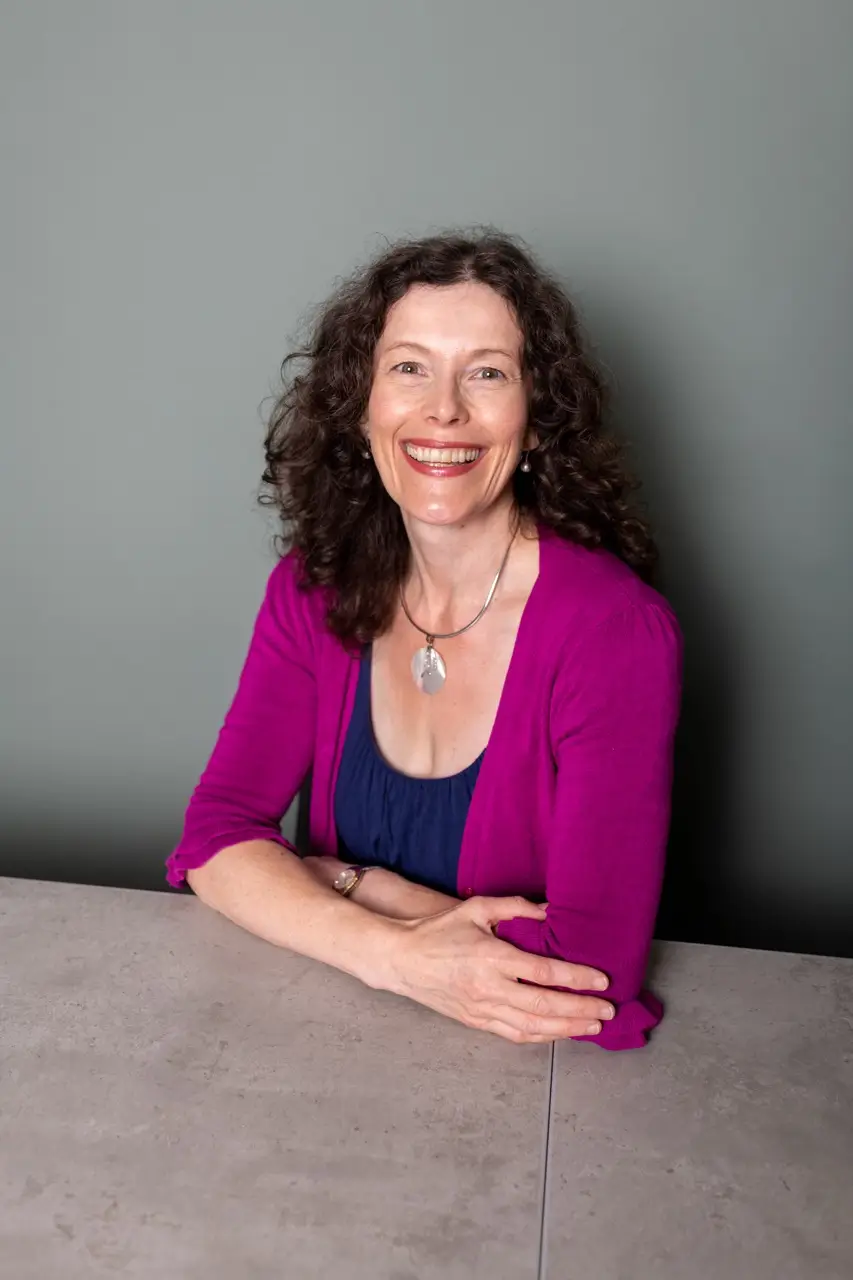

Let’s be honest — most of us aren’t setting boundaries from a place of zen and clarity (cue mountain top, sipping green juice). We’re doing it knee-deep in what I call messy reality.
That’s the day-to-day jumble of responsibilities, relationships, emotions, and expectations — the stuff that makes up a full life. It’s joyful and hopefully meaningful, but also complicated, unpredictable, and at times, downright overwhelming and painful.
Life is a two-for-one deal — what brings us joy and purpose can also lead to pain and complexity.
And modern life only turns up the volume. The 24/7 noise. FOMO. Polarisation. The rising cost of living. And just when we thought things couldn’t get any more layered, along comes artificial intelligence to shake things up even more.
Sound familiar? No wonder setting boundaries can feel tricky – and that’s what makes them all the more essential.
We all have our own versions of messy reality — in both our home and work lives. For our every skill or superpower, there are also the personal traps we fall into. Add to that our universal tendencies (hello, overthinking, guilt, avoidance…), and it's no surprise that setting boundaries can feel complicated.
There’s no one-size-fits-all formula — but there are ways we can learn to navigate this stuff with more confidence and care.
Let’s start by getting clear on what boundaries are — and shaking off some of the unhelpful myths that create obstacles to putting them into practice.
Boundaries are the limits we set in our relationships and what’s acceptable in how we treat each other and ourselves.
Sounds straightforward enough. But our ideas about boundaries are often shaped by myths, which resonate because of our own fears — like the belief that they’re harsh, selfish, or push people away.
In reality, healthy boundaries can be one of the kindest and most connecting things we do, both for ourselves and others. It’s not about being rigid or controlling. It’s about being honest, compassionate, and realistic — especially when life gets messy.
To explore these myths in more detail, including the one about how boundaries only work if everyone else magically behaves better (!), check out: Boundaries Myth Busting
Boundaries are a huge topic, and to add to the fun, there are numerous types of boundaries (physical, mental, emotional, Time, Digital…). I find it helpful to think about boundaries with:
Pretty fundamental, right?
We touched on myths earlier, so we know there is plenty of unhelpful messaging externally on boundaries. How might that shape our own attitudes to the word and concept, and importantly how might this discourage us from getting stuck into prioritising setting and maintaining healthy boundaries in our life?
Take a pause and consider the word Boundaries. What comes to mind?
This is just to get you thinking about your own attitudes and how they are serving you. I go into much more detail in my workshops and upcoming book, ‘A Boundaries Toolkit for Messy Reality’.
For lots of us, the word and concept can sound a bit… rigid. Harsh. Maybe even selfish or limiting. It might conjure up images of shutting people out or building walls. No wonder so many of us hesitate to give this area the attention it deserves.
But boundaries aren’t about shutting life down — they’re about opening it up. About protecting what matters and making space for the things (and people) we value most.
I love Maya Raichoora’s take — she encourages us to think of boundaries as a “helpful guidebook to You.” What are freshing reframe.
Once we’ve shifted how we think about boundaries, the next step is figuring out how to put them into practice — in a way that works for our lives, personalities, and circumstances.
There’s no need for a complete life overhaul, given all my talk of messy reality, we’re clearly not aiming for perfection. Start where you are. Small, thoughtful steps can make a big difference.
Here are 6 principles to guide you:
Identify your limits
Get clear on what’s okay for you — and what’s not — based on your values, current responsibilities, available energy, and support systems. Boundaries don’t need to be forever; they’re allowed to shift as life does.
Keep communicating your needs to set and maintain boundaries (early and often)
We can’t expect people to read our minds — no matter how close we are. If there’s a chance of misunderstanding, try sharing your boundaries upfront. A quick “Just so you know, I’m offline after 6pm” can prevent confusion and frustration down the line.
Setting boundaries is the first step, the maintaining part often takes further effort, I explore this in-depth in my upcoming book and customised sessions.
Check in with yourself regularly
Life changes — and so do our boundaries. It’s totally normal to revisit and adjust what you need depending on what’s happening in your world. What worked last year (or last week!) might need tweaking now.
Learn to say no
Saying no can feel awkward or scary, especially if you're used to people-pleasing. But think of it as saying yes to something more important — your time, energy, values, or wellbeing. (Scroll down for a few tips on making it feel less daunting.)
Prioritise your version of self-care
If the word self-care makes you roll your eyes, you’re not alone. But it really just means doing the things that help you feel more like you. Recharging. Getting your spark back. That might be a quiet walk, ten minutes with a cuppa, or a group chat full of memes. No judgment.
Don’t go it alone
Whether it’s a trusted friend, colleague, or support professional — talking things through can make a world of difference. Sometimes we just need someone to say, “Yes, that boundary makes total sense,” to feel more confident in sticking with it. It can be boring and frustrating maintaining boundaries, a buddy helps maintain consistency and get you back on track after any wobbles.
Brene Brown reminds us that without boundaries, we risk burnout, resentment, frustration, or relying on unhelpful coping strategies — and that’s not good for anyone.
I’d also add compassion fatigue and trauma to the list, especially for those supporting others at home or work. Here’s her inspiration to set us up for the next section, the courage to say No.
Daring to set boundaries is the courage to love ourselves, even when we risk disappointing others…Trust you know what’s best for you and say what you really mean – Brene Brown.
For all the people pleasers out there — or anyone still finding their voice when it comes to saying no — this bit is for you.
It used to be one of my most challenging areas, but with a bit of practice, I’ve discovered that the world doesn’t fall apart. In fact, it often goes better than expected. And over time, it’s become one of the most empowering skills I’ve built.
That said, the discomfort hasn’t disappeared completely — especially when I’m caught off guard or feel pressure to say yes. But having a few go-to strategies in your back pocket can really help. And of course, there’ll be times when it’s not possible or appropriate to say no — the key is not using it as a shield for avoidance or fear.
Here are a few thoughtful ways to handle those moments:
Ask for time
“Let me get back to you tomorrow…” or “I’ll need to check priorities with my manager” can give you breathing space.
Put the ball back in their court
“This is a busy couple of weeks — feel free to check back after June 20th” helps avoid knee-jerk yeses.
Offer an alternative
“I wouldn’t be able to commit to xxx, but I could help with xxx” or “I might not be the best fit — have you considered Dan?” (Sorry, Dan. Time to practise your ‘no’ too.)
Practise with someone you trust
Find someone who’s good at saying no and run through a few examples together.
Keep it short and simple
You don’t need to explain your entire workload. A friendly but firm “I’m not able to take that on right now” can be enough. (Yes, I’m talking to myself too here. Less is often more.)
Choose how you say it
A voice note or quick video message might feel more personal and land more gently than a written reply. It’s worth considering the medium as well as the message.
And remember — most people value honesty and clarity, even if it feels awkward at first. Being direct isn’t rude; it’s respectful (to them and to you). Of course, how we say things can be shaped by culture, personality, and context — so always bring a bit of curiosity and care to the mix.
Setting boundaries isn’t about chasing some perfect version of ourselves — it’s a practical tool for navigating the real, messy, ever-changing reality we’re all living in.
And like most things that matter, it doesn’t have to be grand or dramatic. Small, manageable steps are powerful. Take it from an avid tortoise — steady progress beats burnout risk every time.
Here’s a gentle nudge:
Where might a thoughtful boundary bring you more ease, clarity, or breathing room this week?
And if you’ve found setting boundaries liberating in your own life, why not share your experience? It could be just the encouragement someone else needs.
I talk more about messy reality and how we can safely support each other in another blog: Hope through Conversation, Hope through Messy Reality. And in my upcoming book, I’ll be diving deeper into step-by-step strategies and my ‘Boundaries in Action’ challenge — more on that soon.

Hi, I’m Emma! With 30 years in Learning & Development and varied roles, I specialise in helping workplaces navigate the 'messy reality' of mental health conversations with confidence as part of a broader strategy. My experiences in a range of workplace settings, and as a mental health charity trustee and member of NHS suicide awareness working groups, drive me to provide practical approaches that create real impact. I ensure every session is engaging, down-to-earth, and actionable.
Read More Of My Blogs
Read More Of My Blogs